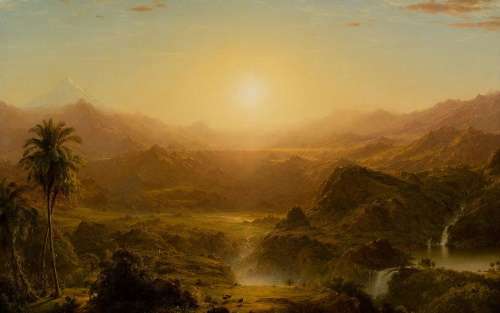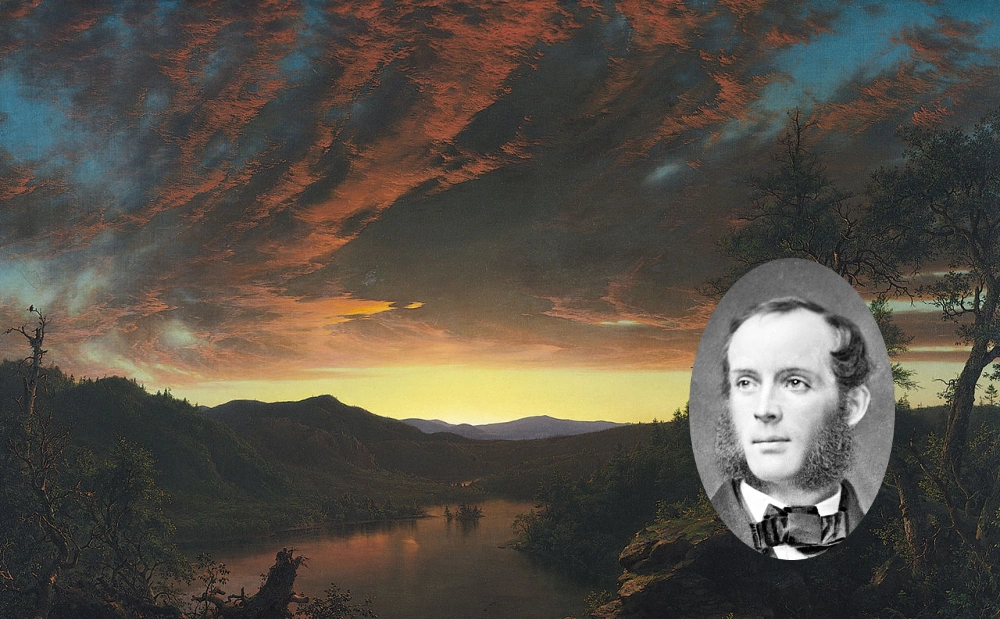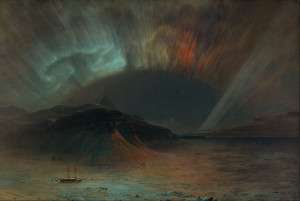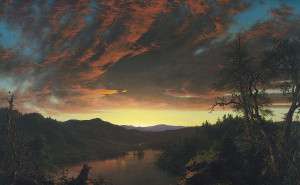Frederic Church was born into a wealthy family in Hartford, Conn., which helped him become one of the central figures of the Hudson River School of painting.
His talent helped, too.
Church was born on May 4, 1826, to Eliza and Joseph Church. His father made his money as a silversmith and watchmaker, and he later became a director of the Aetna Life Insurance Company. His father’s father founded the first paper mill in Lee, Mass.
Eighteen-year-old Frederic Church was introduced to Thomas Cole by Daniel Wadsworth, a family friend and neighbor who founded the Wadsworth Athenaeum. Cole founded the Hudson River School, and he took Church on as his only pupil.
Unlike other painters of the day, Church didn’t go to Europe, but headed to South America to paint. It worked well for him. He earned money and fame. People called him the “Michelangelo of Landscape Art.”
Paintings by Frederic Church
Here are some of our favorite paintings by Frederic Church:
The Icebergs, nearly 10-feet long and six-feet high, sold for $2.5 million in 1979, the most ever at the time for an American painting. Lamar Hunt bought it, then donated it to the Dallas Museum of Art.
Church painted The Icebergs in 1861 after he took a voyage to the North Atlantic around Labrador and Newfoundland. He then put the monumental work on exhibition, where people paid 25 cents to see it. After he sold it to a client, it ended up in a private home in Manchester, England. It stayed there for 78 years.
Church, though, fell out of favor, forgotten by the public until interest in his work revived after World War II.
Aurora Borealis
The painting depicts an Arctic expedition. Church didn’t go on it, but his pupil, Isaac Hayes, did. Hayes sketched the aurora borealis and brought it back to Church. The tiny ship in the foreground also comes from a sketch by Hayes.
Church painted it in 1865, the end of the Civil War. People interpreted the ship navigating the dark passage as an allegory of the Union’s victory in the conflict.
Twilight in the Wilderness
Art historians believe Church probably painted this, one of his most famous works, from sketches he’d made earlier. Church traveled the wilds of New England as a young man, looking for subject matter. He favored two especially remote regions in Maine, Mount Katahdin and Mount Desert Island.
The Andes of Ecuador

The Andes of Ecuador. Courtesy Reynolds House Museum of American Art
Unlike most artists of his age, Church didn’t get too excited about Europe. But South America turned him on. In 1853, he visited the volcanoes and cities of Colombia and Ecuador and crossed the isthmus of Panama. A financier named Cyrus West Field paid for the trip, hoping Church’s paintings would inspire people to invest in his South American projects.
From his sketches, Church painted The Andes of Ecuador. He displayed it at the Boston Athenaeum, where Henry David Thoreau went to see it.
This story last updated in 2022.





1 comment
[…] Cole, founder of the Hudson River School of painting, found inspiration in the Willey family tragedy. He painted a landscape called Distant […]
Comments are closed.